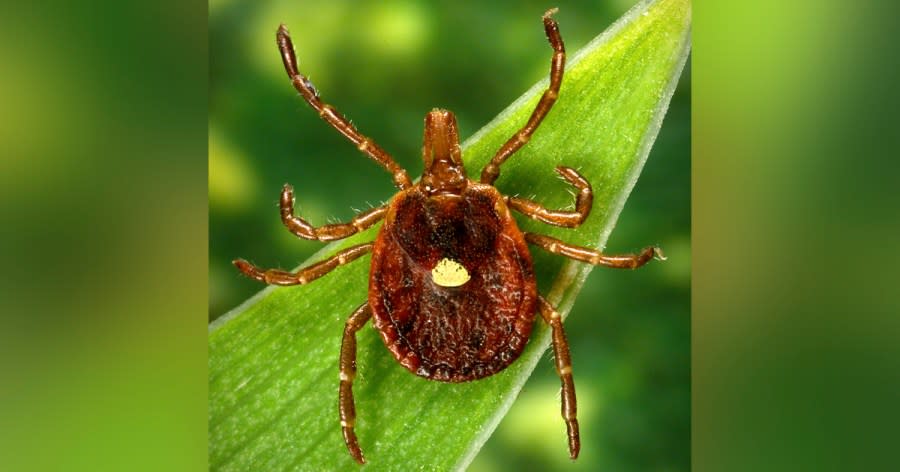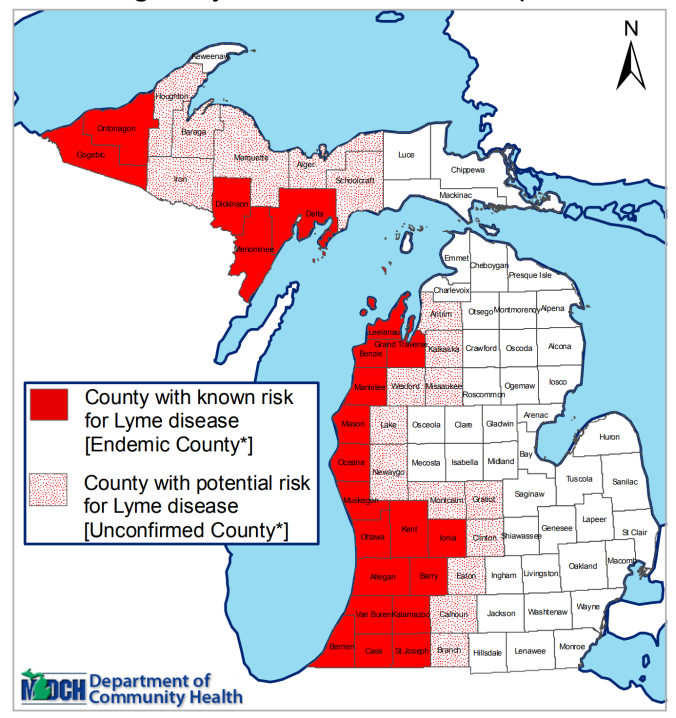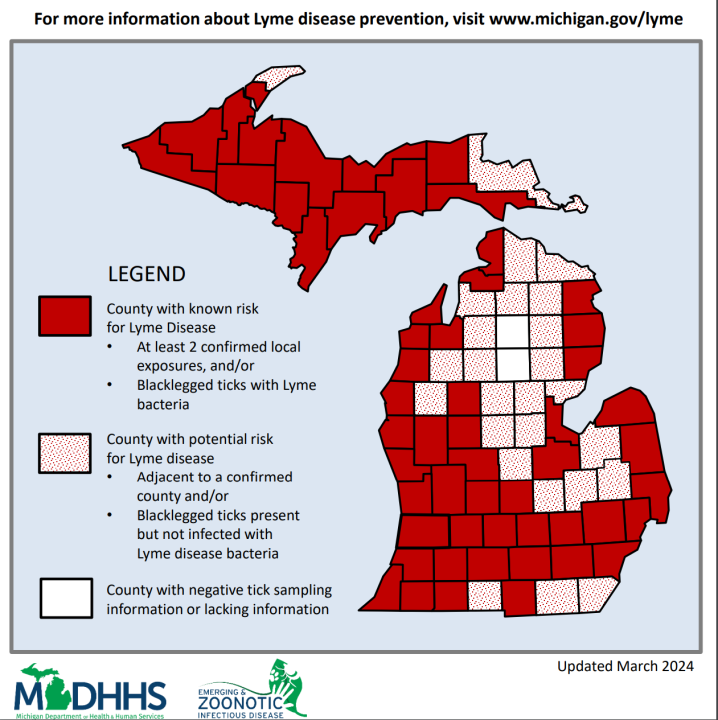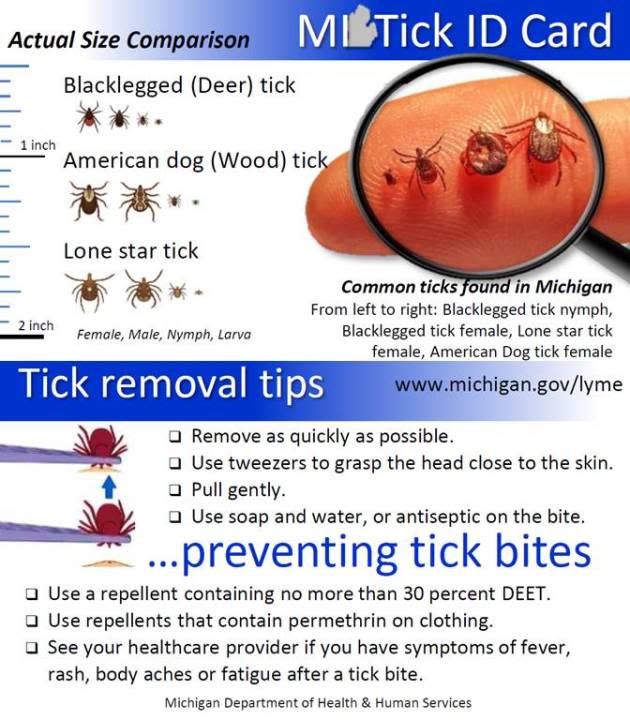Health officials warn of tick threat
LANSING, Mich. (WLNS) — The risk of Lyme disease has been quietly growing in mid-Michigan for years now, but many people still don’t know when, or where to be on watch.
“I just know that you get them if you go deep into the woods or anything out there,” said parkgoer Rishika Paruthi. “I don’t really know how to take care of it or anything.”
A tick normally needs to be on you for more than 24 hours to spread a disease.

That is why officials like Emily Pochubay, public health and pest specialist for the Michigan Department of Agriculture and Rural Development say you should know how to take care of it quickly.
“The number one strategy for tick prevention is to ensure that you are doing your tick checks of yourself, your kids, and your pets anytime you’ve spent some time outside,” Pochubay said.
Problematic tick populations have been slowly moving into mid-Michigan over the last decade, and with it, the risk for Lyme disease, a severe autoimmune disorder.



World-renowned tick expert and MSU professor Jean Tsao says it won’t be long before the whole state has a high risk of Lyme disease.
On top of that, a new invasive species called the Lone Star Tick, is just starting to show up in Southern Michigan, and with it the threat of new diseases, including one that makes people allergic to meat.
That’s why experts recommend checking for ticks daily, even if you’ve only been walking on sidewalks.
And if you do go deep into the woods, insect repellent, long pants, and tucked shirts will help keep you safe.
“The best way to prevent contracting diseases like Lyme disease or something else that is tick-borne is to prevent tick bites,” Pochubay said.
Still, predicting when, where, and how long ticks will be is not an exact science. Researchers currently believe that rainfall in early summer make a difference, as ticks tend to decline during droughts.
Specifically, Mid-Michigan has been cited as a place where we don’t know a lot about current tick populations. Unlike other parts of the state which have been monitoring ticks for decades, our area has little data available to researchers.
But there is a way the public can help to solve that problem. Before you flush a tick away, researchers are asking you to take a picture of it. Health officials at the Michigan Department of Health and Human Services monitor these submissions to both give out advice when needed and to get a better idea of what they are dealing with in each region.
Emily Dinh works with the department as a medical entomologist where she specializes in diseases transmitted from bugs. She says the community serves as the eyes of the department.
“We have a wealth of data going into weather predictions, and maybe one day I would like to get to that point,” Dinh said. “Our efforts at MDHHS is to increase that capacity to do tick collections because I can’t really tell you anything, like what are the ticks going to be like this year, unless I have people doing the work of finding the ticks out there and giving me data.”
You can either email a picture of the tick to MDHHS-Bugs@michigan.gov, or you can mail the tick to the MDHHS for identification. Submission kits are available for free from your local health department.
If you are interested in having your tick identified, see the more detailed instructions provided for the process at this link.
If a troubling tick is identified, like the infamous black-legged tick, you may have the option to seek preemptive treatment to make sure you don’t get sick.
For more information, visit The Michigan Emerging and Zoonotic Disease Surveillance Summary and Ticks and Your Health: Preventing tick-borne illness in Michigan.
For the latest news, weather, sports, and streaming video, head to WLNS 6 News.
